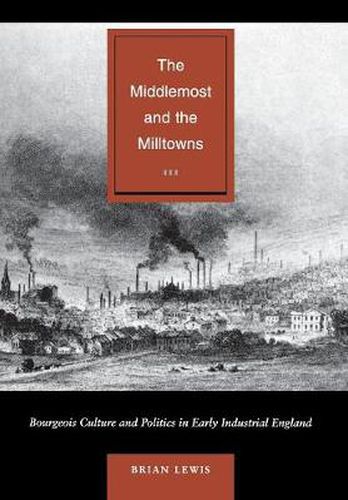Readings Newsletter
Become a Readings Member to make your shopping experience even easier.
Sign in or sign up for free!
You’re not far away from qualifying for FREE standard shipping within Australia
You’ve qualified for FREE standard shipping within Australia
The cart is loading…






This book seeks to enrich our understanding of middle-class life in England during the Industrial Revolution. For many years, questions about how the middle classes earned (and failed to earn) money, conducted their public and private lives, carried out what they took to be their civic and religious duties, and viewed themselves in relation to the rest of society have been largely neglected questions. These topics have been marginalized by the rise of social history, with its predominant focus on the political formation of the working classes, and by continuing interest in government and high politics, with its focus on the upper classes and landed aristocracy. This book forms part of the recent attempt, influenced by contemporary ideas of political culture, to reassess the role, composition, and outlook of the middle classes. It compares and contrasts three Lancashire milltowns and surrounding parishes in the early phase of textile industrialization when the urbanizing process was at its most rapid and dysfunctional, and class relations were most fraught. The book s range extends from the French Revolution to 1851, the year of the Great Exhibition, which symbolized mid-century stability and prosperity.
$9.00 standard shipping within Australia
FREE standard shipping within Australia for orders over $100.00
Express & International shipping calculated at checkout
This book seeks to enrich our understanding of middle-class life in England during the Industrial Revolution. For many years, questions about how the middle classes earned (and failed to earn) money, conducted their public and private lives, carried out what they took to be their civic and religious duties, and viewed themselves in relation to the rest of society have been largely neglected questions. These topics have been marginalized by the rise of social history, with its predominant focus on the political formation of the working classes, and by continuing interest in government and high politics, with its focus on the upper classes and landed aristocracy. This book forms part of the recent attempt, influenced by contemporary ideas of political culture, to reassess the role, composition, and outlook of the middle classes. It compares and contrasts three Lancashire milltowns and surrounding parishes in the early phase of textile industrialization when the urbanizing process was at its most rapid and dysfunctional, and class relations were most fraught. The book s range extends from the French Revolution to 1851, the year of the Great Exhibition, which symbolized mid-century stability and prosperity.